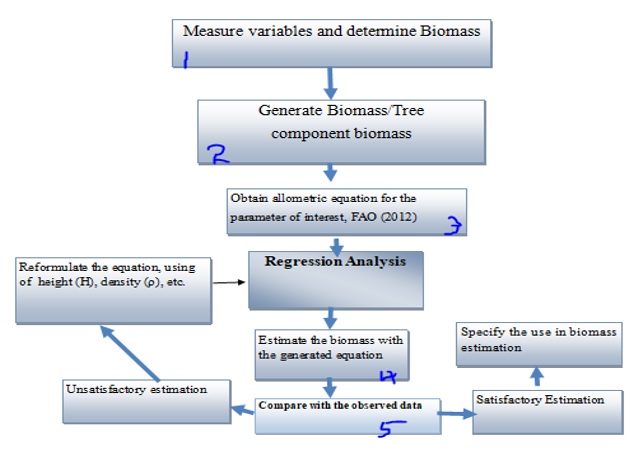Allometric equations are used to estimate accurate biomass and carbon stock of forests. However, in Ethiopia only few allometric equations as compared to its floral diversity and species-specific allometric equations for Acacia species are still not developed in Ethiopia. The numbers of tree marked for sampling are Fifty-four (54) using preferential sampling. Diameter at breast height, wood density and tree height were collected as independent variables to predict species specific dry biomass of Acacia species. The new species-specific allometric models have been performed using linear regression analysis in the R software. The Above ground biomass (AGB) have been validated using quantitative statically using the pantropic model. Six candidate models have been developed for each species and four best models for each species of dry biomass was selected based on goodness-of-fit statistics and equation performance analysis of the candidate models. The best model for predicting above ground biomass for Acacia seyal is 0.20636*((DBH2)Hρ) 0.53167, for Acacia polyacantha is 7.26982((DBH)2Hρ)0.21750, for Acacia ethibcia is 29.01898*((DBH)2Hρ)0.21518 and for Acacia toritolis is 3.82427*((DBH)2Hρ)0.16748. The selected models are the best performing (P> 0.01) and higher adjusted R2 (>80%) and has lower Akaike’s Information Criteria (AIC) and residual standard error (RSE) values as comparing the rest of the model. The validation of new developed biomass model using Tukey test indicated that significant variation of mean biomass (P<0.05) between the new developed model and the generalized model. The statistics model performance analysis of Nash-Sutcliffe efficiency (NSE) value is approaching to one, indicating that the new developed model has better performance model as compared with generalized model. Moreover, the percent bias of the new developed models is close to zero which indicates that the site-specific biomass models have more accurate estimator and the generalized biomass models have overestimated biomass for the four Acacia species.

